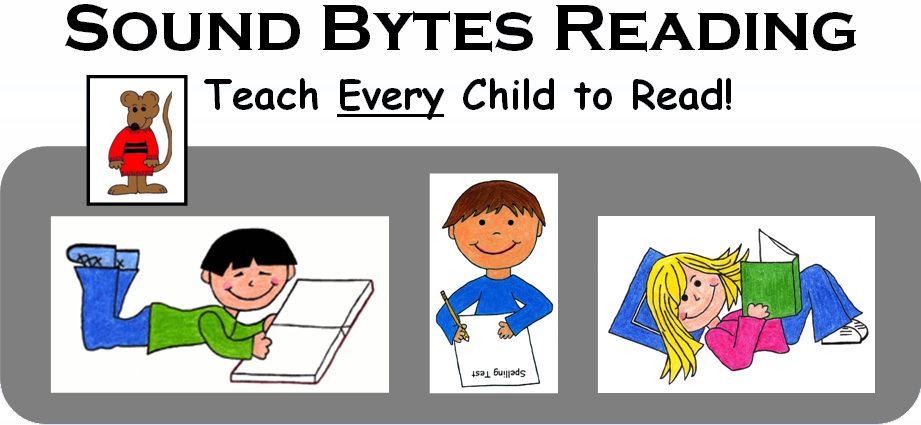How Do I Teach Phonics to Beginning Readers?
What is “phonics”? Phonics is teaching beginning readers that written letters represent sounds, and that we can connect those sounds to make words. It is one of the five components of a good reading program.*
*https://www.soundbytesreading.com/blog/what-is-a-good-reading-program-how-should-we-teach-reading/
Letters of the alphabet do not actually make sounds—they represent sounds. We name this letter, M, (“em”), but it sounds something like “muh” when we pronounce it in a word. If we add the letter O (“oh”) which represents the sound “ah” (this letter also represents three other sounds), and another letter M, we can write a series of symbols that represent the word “mom.” We do not read this word by using the letter names (em-oh-em). We read—or decode—the word by using the sounds the letters represent (muh-ah-muh). This is what phonics is.
Teaching phonics is a matter of telling students what sound (or sounds) that letters represent, and how to connect the sounds to make words that they will recognize and that have meaning.
During phonics instruction, beginning readers learn that these symbols, c – a – t, represent sounds that are pronounced in a specific way, and when the sounds of the three individual symbols are blended (or sounded) together quickly, they make a recognizable word which represents this picture.

Teaching phonics does not have to be a complicated process—but it does need to be taught using a well-thought-out systematic and sequential reading program.
Beginning readers learn phonics quickly and easily if they are required to learn only a few new sound-symbols at a time (preferably not more than three). Beginning readers should practice decoding words using those new sound-symbols (letter-sounds) immediately after learning them. This word decoding practice should then be reinforced with practice reading a short decodable story or a few sentences using the new words. One short-coming of many reading programs is having insufficient decodable stories for beginning readers.
If a reading program teaches too many letter-sounds at one time, or if there is insufficient decoding practice following the introduction of new letter-sounds, students will have difficulty remembering them. This can lead to reading failure. Beginning readers should not be asked to read words that they have not yet been taught the letter-sounds for. The only exception should be a few sight words such as the word “the” so that your students can read stories right away.
Choose your reading program carefully! If you have students who are struggling with reading in their current program, do not blame the students for not trying hard enough. Instead, find a well-designed reading program so your students will learn to read and learn to love reading!
